
PTFE material
Custom PTFE Teflon Parts Manufacturer PTFE Beaker and Lids
Item Number : PTFE-16
Price varies based on specs and customizations
Shipping:
Contact us to get shipping details Enjoy On-time Dispatch Guarantee.
Why Choose Us
Reliable PartnerEasy ordering process, quality products, and dedicated support for your business success.
Introduction
The PTFE beaker, also known as a Teflon beaker, is a robust laboratory container designed for harsh chemical reactions. It offers exceptional resistance to both acids and alkalis, with a temperature tolerance ranging from -80°C to 260°C. This beaker is impervious to most chemicals, non-porous, and features a smooth surface, making it a reliable alternative to glass and PP beakers. It is lightweight, easy to clean, and includes a molded-in pour spout with an optional lid. Ideal for severe chemical environments, it should not be used directly on a heating plate.
PTFE beakers are used in a variety of industries, including:
- Chemical Laboratories: Ideal for handling corrosive chemicals and conducting experiments involving high temperatures and aggressive substances.
- Research and Development: Used in R&D settings for testing new chemical compounds and formulations due to their inertness and temperature resistance.
- Pharmaceutical Industry: Essential for storing and mixing pharmaceutical ingredients that require precise temperature control and chemical inertness.
- Education: Commonly used in educational institutions for teaching chemistry and other sciences, providing students with a safe and durable tool for experiments.
- Industrial Processing: Employed in industrial settings for processes involving corrosive materials or high-temperature reactions.
- Food and Beverage Industry: Useful for handling food-grade chemicals and additives, ensuring safety and purity.
- Environmental Testing: Used for sampling and testing environmental samples, especially those containing corrosive or hazardous substances.
Details & Parts




Technical specifications
| Model | inside diameter/mm | height/mm | weight/g |
|---|---|---|---|
| 30ml | 37 | 52 | 25 |
| 50ml | 44 | 54 | 40 |
| 100ml | 53 | 54 | 60 |
| 150ml | 60 | 79 | 89 |
| 200ml | 70 | 79 | 97 |
| 250ml | 73 | 88 | 134 |
| 300ml | 79 | 100 | 167 |
| 500ml | 95 | 110 | 172 |
| 1000ml | 115 | 145 | 364 |
Advantages
- Extreme Chemical Resistance: PTFE beakers are highly resistant to most chemicals, including strong acids and alkalis. This makes them ideal for use in environments where exposure to corrosive substances is common, ensuring the integrity of the container and the safety of the contents.
- High and Low Temperature Resistance: These beakers can withstand a wide range of temperatures, from as low as -196°C up to 250°C. This versatility allows them to be used in various applications, including low-temperature digestions and high-temperature reactions without compromising their structure or performance.
- Minimal Contamination: Due to their non-porous and inert nature, PTFE beakers minimize the risk of product contamination by carbon, oxygen, and other gases. This is crucial for maintaining the purity of samples and reagents.
- Excellent Cleanability: The smooth, non-stick surface of PTFE beakers makes them very easy to clean. This reduces the time and effort required for post-experiment cleanup, which is particularly beneficial in busy laboratories.
- Cost-Effective: Compared to materials like platinum, PTFE beakers offer substantial cost savings without sacrificing performance. This makes them an economically viable option for laboratories with budget constraints.
- Durability and Longevity: PTFE is known for its excellent aging resistance, which means these beakers have a long lifespan, reducing the need for frequent replacements.
Designed for You
KinTek provide deep custom made service and equipment to worldwide customers, our specialized teamwork and rich experienced engineers are capable to undertake the custom tailoring hardware and software equipment requirements, and help our customer to build up the exclusive and personalized equipment and solution!
Would you please drop your ideas to us, our engineers are ready for you now!
FAQ
What Are The Key Features Of PTFE Beakers?
Can PTFE Beakers Be Used On A Hotplate?
What Is The Temperature Range For PTFE Crucibles?
What Are Typical Applications For PTFE Beakers?
How Do PTFE Beakers Compare To Glass And PP Beakers?
Can PTFE Beakers Be Used As A Substitute For Platinum Beakers?
What Precautions Should Be Taken When Heating PTFE Beakers?
4.8
out of
5
The PTFE beaker is a game-changer in the laboratory! Its chemical resistance and durability make it a must-have for any analysis. Love it!
4.9
out of
5
The PTFE beaker is extremely versatile. Its temperature resistance and chemical compatibility are excellent. Highly recommended!
4.7
out of
5
The PTFE beaker is a top-quality product. Its smooth surface and easy cleaning make it a go-to choice in our lab. Great value for money!
4.8
out of
5
The PTFE beaker is an essential tool in our research and development. Its durability and resistance to chemicals are outstanding. A reliable product!
4.7
out of
5
As a laboratory manager, I highly recommend the PTFE beaker. Its high temperature resistance and chemical inertness are unbeatable. Great investment!
4.9
out of
5
The PTFE beaker has surpassed my expectations. Its chemical resistance and stability are exceptional. A reliable product for any laboratory!
4.8
out of
5
We have been using the PTFE beaker for a while now, and it has become an indispensable tool. Its durability and resistance to extreme environments are impressive!
4.7
out of
5
The PTFE beaker is an excellent investment for any laboratory. Its chemical compatibility and easy sterilization make it a reliable choice. Highly recommended!
4.9
out of
5
The PTFE beaker is a fantastic product. Its high-quality construction and resistance to chemicals make it an essential tool in our lab. Love it!
4.7
out of
5
The PTFE beaker is a great addition to our lab. Its chemical resistance and temperature tolerance are impressive. A reliable choice!
4.8
out of
5
The PTFE beaker is a must-have in any lab. Its excellent chemical resistance and easy cleaning make it a valuable asset. Great investment!
4.7
out of
5
The PTFE beaker is a game-changer in our lab. Its durability and resistance to extreme temperatures are outstanding. Highly recommend!
4.8
out of
5
I cannot recommend the PTFE beaker enough. Its chemical resistance and easy sterilization make it a reliable choice for any laboratory. Love it!
4.9
out of
5
The PTFE beaker has exceeded my expectations. Its resistance to chemicals and durability are exceptional. An essential tool for any lab!
4.7
out of
5
We have been using the PTFE beaker for a while now, and it has proven to be a reliable and durable tool. Its chemical resistance is outstanding. Highly recommended!
4.8
out of
5
The PTFE beaker is a high-quality product. Its resistance to chemicals and easy cleaning make it a valuable asset in our laboratory. Great investment!
4.9
out of
5
The PTFE beaker is a game-changer in our research and development. Its temperature resistance and chemical compatibility are unbeatable. Highly recommend!
4.7
out of
5
The PTFE beaker is a reliable tool in our lab. Its chemical resistance and stability make it an essential item for any experiment. Love it!
4.8
out of
5
The PTFE beaker is an excellent investment. Its durability and resistance to extreme environments are impressive. Highly recommended for any laboratory!
4.9
out of
5
The PTFE beaker has become an essential tool in our lab. Its chemical resistance and easy cleaning make it a reliable choice. Great value for money!
REQUEST A QUOTE
Our professional team will reply to you within one business day. Please feel free to contact us!
Related Products

Custom PTFE Teflon Parts Manufacturer for PTFE Tweezers
PTFE tweezers inherit the excellent physical and chemical properties of PTFE, such as high temperature resistance, cold resistance, acid and alkali resistance, and corrosion resistance to most organic solvents.

Custom Machined and Molded PTFE Teflon Parts Manufacturer with PTFE Crucible and Lid
PTFE crucibles, made from pure Teflon, offer chemical inertness and resistance from -196°C to 280°C, ensuring compatibility with a wide range of temperatures and chemicals. These crucibles feature machine-finished surfaces for easy cleaning and prevention of contamination, making them ideal for precise laboratory applications.

Custom PTFE Teflon Parts Manufacturer for PTFE Containers
PTFE container is a container with excellent corrosion resistance and chemical inertness.
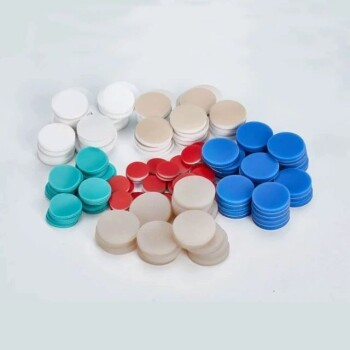
Custom PTFE Teflon Parts Manufacturer for Gaskets and More
Gaskets are materials placed between two flat surfaces to enhance the seal. To prevent fluid leakage, sealing elements are arranged between static sealing surfaces.

Custom PTFE Teflon Parts Manufacturer for PTFE Measuring Cylinder 10/50/100ml
PTFE measuring cylinder are a rugged alternative to traditional glass cylinders. They are chemically inert over a wide temperature range (up to 260º C), have excellent corrosion resistance and maintain a low coefficient of friction, ensuring ease of use and cleaning.
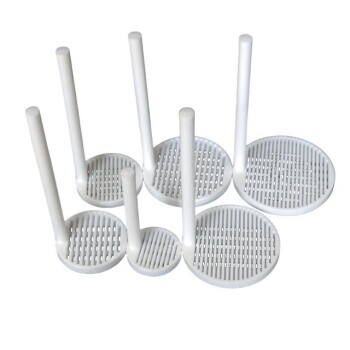
Custom PTFE Teflon Parts Manufacturer for Cleaning Racks
PTFE cleaning racks are mainly made of tetrafluoroethylene. PTFE, known as the "King of Plastics", is a polymer compound made of tetrafluoroethylene.
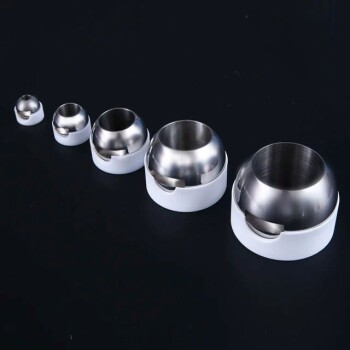
Custom PTFE Teflon Parts Manufacturer for PTFE Ball Valve Seat
Seats and inserts are vital components in the valve industry. As a key component, polytetrafluoroethylene is usually selected as the raw material.

Custom PTFE Teflon Parts Manufacturer for Centrifuge Tubes
PTFE centrifugal tubes are highly valued for their exceptional chemical resistance, thermal stability, and non-stick properties, making them indispensable in various high-demand sectors. These tubes are particularly useful in environments where exposure to corrosive substances, high temperatures, or stringent cleanliness requirements are prevalent.
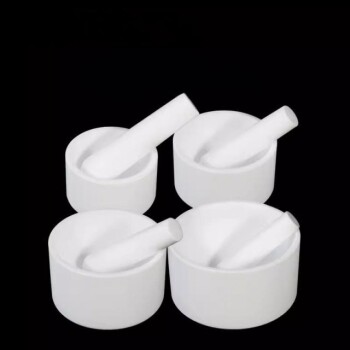
Custom PTFE Teflon Parts Manufacturer Grinding Bowl
PTFE is renowned for its exceptional chemical resistance, thermal stability, and low friction properties, making it a versatile material in various industries. The PTFE grinding bowl, specifically, finds applications where these properties are crucial.

Custom PTFE Teflon Parts Manufacturer for Magnetic Stirring Bar
The PTFE magnetic stirring bar, made from high-quality PTFE, offers exceptional resistance to acids, alkalis, and organic solvents, coupled with high-temperature stability and low friction. Ideal for laboratory use, these stirring bars are compatible with standard flask ports, ensuring stability and safety during operations.
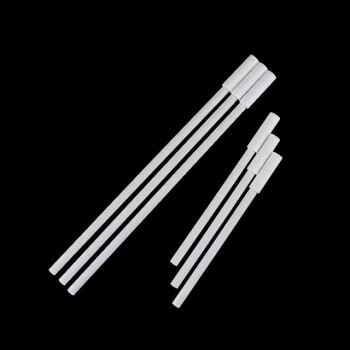
Custom PTFE Teflon Parts Manufacturer for PTFE Stirring Bar Recovery Rod
This product is used for stirrer recovery, and is resistant to high temperature, corrosion, and strong alkali, and is almost insoluble in all solvents. The product has a stainless steel rod inside and a polytetrafluoroethylene sleeve outside.

Custom PTFE Teflon Parts Manufacturer for Centrifuge Tube Racks
The precision-made PTFE test tube racks are completely inert and, due to the high temperature properties of PTFE, these test tube racks can be sterilized (autoclaved) without any problems.
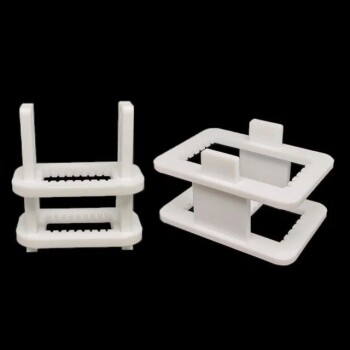
Custom PTFE Teflon Parts Manufacturer for Conductive Glass Substrate Cleaning Rack
The PTFE conductive glass substrate cleaning rack is used as the carrier of the square solar cell silicon wafer to ensure efficient and pollution-free handling during the cleaning process.
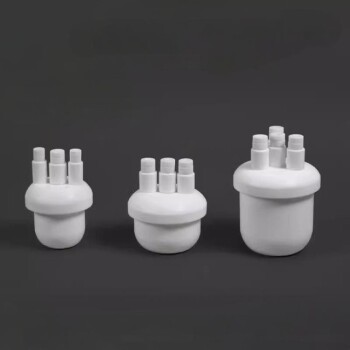
Custom PTFE Teflon Parts Manufacturer for Three-Necked Round Bottom Flask
PTFE flask, is a versatile laboratory container made from PTFE, offering exceptional chemical resistance, temperature stability, and non-stick properties. Ideal for handling corrosive substances and high-temperature applications, these flasks are essential in various laboratory procedures, including heating, mixing, and storage of chemicals.

Custom PTFE Teflon Parts Manufacturer for PTFE Buchner Funnel and Triangular Funnel
The PTFE funnel is a piece of laboratory equipment used primarily for filtration processes, particularly in the separation of solid and liquid phases in a mixture. This setup allows for efficient and rapid filtration, making it indispensable in various chemical and biological applications.

Custom PTFE Teflon Parts Manufacturer for Air Valve Applications
PTFE small air valve for gas-liquid sampling and sampling bag for sample collection.

Custom PTFE Teflon Parts Manufacturer for PTFE Mesh F4 Sieve
PTFE mesh sieve is a specialized test sieve designed for particle analysis in various industries, featuring a non-metallic mesh woven from PTFE filament. This synthetic mesh is ideal for applications where metal contamination is a concern . PTFE sieves are crucial for maintaining the integrity of samples in sensitive environments, ensuring accurate and reliable results in particle size distribution analysis.
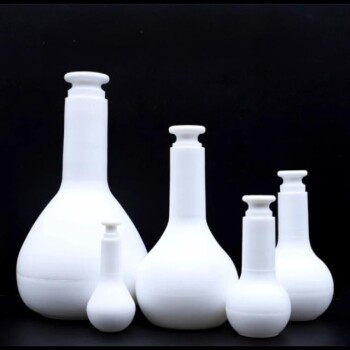
Custom PTFE Teflon Parts Manufacturer for F4 PTFE Volumetric Bottle
The PTFE Volumetric Flask, a robust alternative to glass and PP flasks, excels in measuring both acidic and alkaline liquids. Characterized by its chemical inertness, translucency, and wide volume options, this flask ensures a non-leachable, ultra-clean background. Its non-stick surface simplifies cleaning and maintenance, making it ideal for harsh laboratory conditions.

Custom PTFE Teflon Parts Manufacturer for Culture Dish and Evaporation Dish
The PTFE culture dish evaporating dish is a versatile laboratory tool known for its chemical resistance and high-temperature stability. PTFE, a fluoropolymer, offers exceptional non-stick properties and durability, making it ideal for various applications in research and industry, including filtration, pyrolysis, and membrane technology.
Related Articles

PTFE seals: the invisible guardian of industrial leakage prevention
PTFE Seals are used to prevent liquid or gas leakage and are widely used in valves, pumps, and piping systems.

Performance and application of polytetrafluoroethylene (PTFE) in high temperature environment

Exploring the Multifunctional Electrolytic Cell Water Bath: Applications and Benefits
Discover the versatile applications of multifunctional electrolytic cell water baths in various industries. Learn about their benefits, components, and how they facilitate chemical reactions and temperature control.

The key role of PTFE in semiconductor manufacturing: from gas pipelines to electrical insulation
From high-purity gas delivery pipelines to precision electrical insulation components, the multi-faceted application of PTFE in the semiconductor industry chain provides important guarantees for the purity, stability and reliability of the manufacturing process.

Innovative Application of PTFE in Mechanical Seals
PTFE has become one of the core materials in the field of mechanical seals due to its unique chemical stability, low friction coefficient (0.04-0.15), wide temperature range (-268°C to +315°C) and excellent corrosion resistance (pH 0-14).

Polytetrafluoroethylene (PTFE): How low friction coefficient promotes industrial progress
Explore the unique advantages of polytetrafluoroethylene (PTFE)'s low coefficient of friction and analyze how it promotes progress and innovation in industrial technology in terms of reducing wear and improving equipment efficiency.

PTFE's high temperature and corrosion resistance: Why it is indispensable in industry
The unique advantages of polytetrafluoroethylene (PTFE) in high temperature and corrosion resistance analyze why it has become an indispensable material in industry, especially in applications in harsh environments.

How to use PTFE to improve the working efficiency of pumps and valves
Polytetrafluoroethylene (PTFE) has become a key material for improving the efficiency of pumps and valves due to its unique physical and chemical properties.

Understanding Isostatic Pressing: Process, Benefits, Limitations, and Applications
Isostatic pressing is a manufacturing process that offers numerous benefits and applications in various industries. It involves subjecting a material to equal pressure from all directions to achieve uniform density and shape. This method is particularly advantageous compared to other production techniques.

Isostatic Pressing Technology: Revolutionizing Ceramic Material Densification
Explore how isostatic pressing techniques enhance ceramic properties, achieving 100% theoretical density and eliminating porosity.

Isostatic Pressing Technology: Principles, Classification, and Applications
An in-depth look at isostatic pressing technology, its types, and diverse applications across various industries.

Comprehensive Guide to Isostatic Pressing:Processes, and Features
Isostatic pressing is a versatile manufacturing process that is widely used in various industries. It involves subjecting a material to equal pressure from all directions to achieve uniform density and shape. Isostatic pressing offers numerous advantages, such as the ability to produce complex shapes, uniformity in material properties, and high precision. This comprehensive guide will delve into the different types of isostatic pressing, including cold, warm, and hot pressing. We will explore the processes, features, and applications of each type, providing you with a thorough understanding of this essential manufacturing technique. So let's dive in!